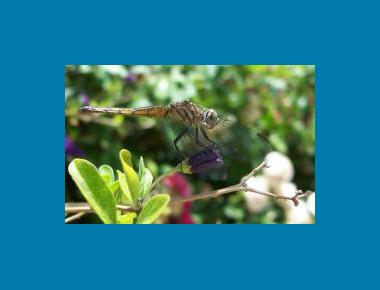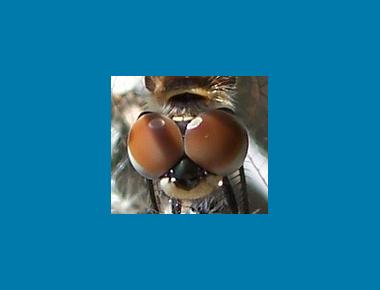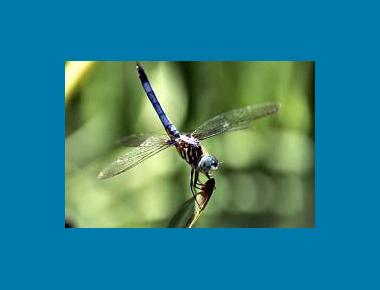Facilitating the protection and restoration of species and ecosystems at risk on BC’s South Coast
Blue Dasher
Pachydiplax longipennis
Length: males 3.6 — 4.1 cm, females: 3.5 — 4.0 cm. Sexes are similar in size but are dimorphic in colour. Adult males have large, blue-green eyes that meet across the top of the head. Eyes of females and immature males are light green with the upper part of the eye reddish-brown (more extensive on immature males). The face of both sexes is white. On males the wing base is tinted with blue and gold, on females the wing base can be brown or without colour. The thorax is yellow with heavy dark stripes. Striping is paler on females and immature males and the thorax is pale green. Mature males have distinct “pruinescent” (dusty or frosty looking) blue abdomens, with the ventral area of the upper abdominal segments yellow and the lowest abdominal segments blue-black. Females have yellow abdomens with dull brown patterning. The lower abdominal segments can be completely brown. Immature males are similar to females in colouration on the abdomen (though patterning can be darker and shows a slight pruinescence as they mature). The pterostigma (coloured, thickened cell on the leading edge of each wing membrane near the tip), is long and narrow. Wings are often cocked downward when perching. The 1.8-2.1 cm larvae have prominent eyes with a dark ridge running inward from the back of each eye. Larvae are cream coloured dorsally with distinct dark bands and brown spotting. The ventral area of the abdomen is bright green. Larvae have a single, rear-facing spine on each side of the eighth and ninth abdominal segments. Dorsal hooks on the abdomen are absent.
Download Species Fact Sheet in PDF
Status
RESOURCES
A joint venture resource providing comprehensive information on a range of species and ecological communities specific to the Coast Region of BC (including the South, Central and North Coast, Vancouver Island and Haida Gwaii).













